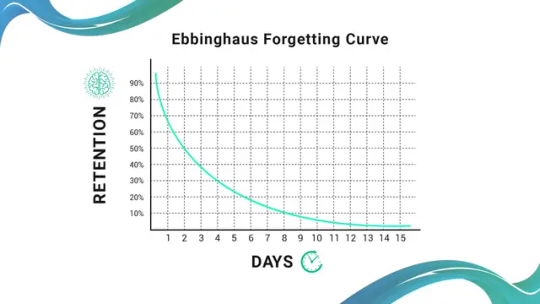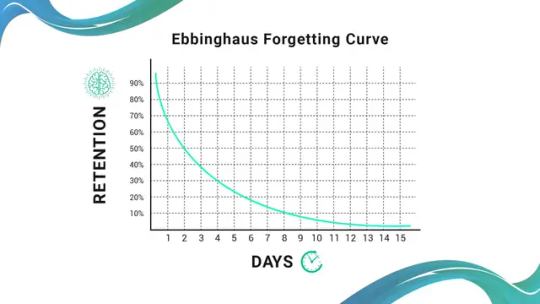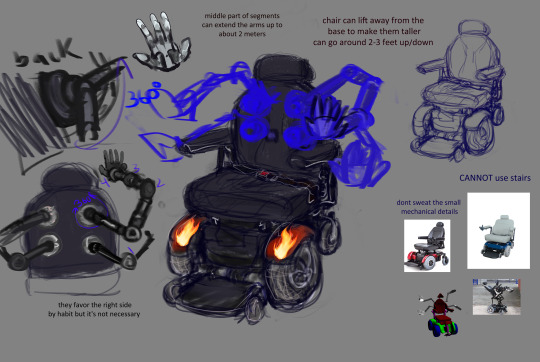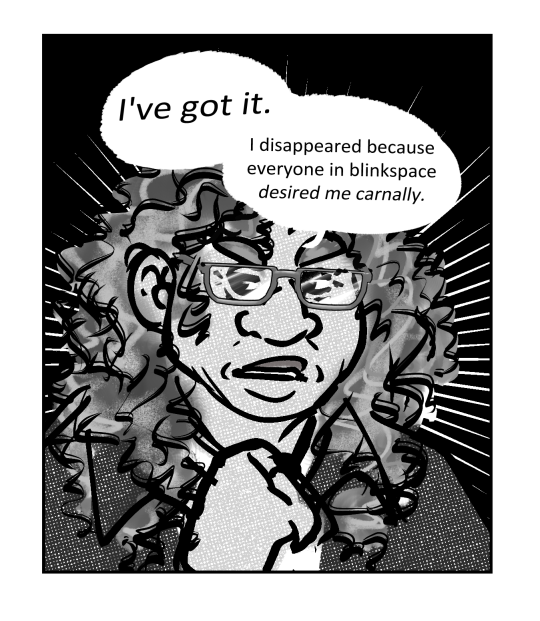#memory curve
Explore tagged Tumblr posts
Text
The Science of Forgetting: Why Trainers Must Rethink Learning Strategies

The Forgetting Curve and Its Relevance for Trainers: How to Ensure Long-Term Knowledge Retention
Introduction
Have you ever attended a training session, felt confident about what you learned, and then struggled to recall most of it just days later? This phenomenon is explained by the Forgetting Curve, a concept introduced by German psychologist Hermann Ebbinghaus in the late 19th century. His research showed that without reinforcement, people forget nearly 50% of newly learned information within an hour and up to 90% within a week.
For trainers, this presents a major challenge. No matter how well-designed a training program is, its effectiveness is limited if learners quickly forget the material. The good news? With the right strategies, trainers can combat the Forgetting Curve and ensure long-term knowledge retention.
This article explores the science behind the Forgetting Curve, its implications for trainers, and proven strategies to make learning stick.
Understanding the Forgetting Curve
What is the Forgetting Curve?
The Forgetting Curve describes how memory retention declines over time without reinforcement. Ebbinghaus conducted experiments where he memorized nonsense syllables and tested his recall over varying time intervals. His results formed a steep, downward-sloping curve, demonstrating rapid forgetting unless information is reviewed periodically.
Key Insights from the Forgetting Curve
Forgetting Happens Fast – Learners forget up to 70% of information within 24 hours of learning if there’s no reinforcement.
Repetition Strengthens Memory – Regular review interrupts forgetting and moves knowledge into long-term memory.
Meaningful Learning Improves Retention – Information that is relevant, contextual, and engaging is remembered better.
Active Recall is More Effective – Actively retrieving information (e.g., quizzes, teaching others) improves memory more than passive review.
These findings highlight the urgent need for trainers to implement strategies that reinforce learning over time.
Why the Forgetting Curve Matters for Trainers
For corporate trainers, L&D professionals, and educators, understanding the Forgetting Curve is critical. If trainees forget most of what they learn, then training programs are failing to create lasting impact.
Common Training Pitfalls That Lead to Forgetting
One-and-Done Training – Single-session workshops without follow-up lead to rapid information loss.
Overloading Learners – Dumping too much content at once overwhelms learners, making retention difficult.
Lack of Reinforcement – Without periodic reviews, knowledge fades quickly from memory.
Passive Learning Methods – Traditional lectures and static e-learning do not engage learners enough for deep retention.
The Cost of Forgetting in Organizations
Reduced Employee Performance – Employees forget essential skills, leading to mistakes and inefficiency.
Compliance Risks – Forgetting critical compliance regulations can result in legal consequences.
Wasted Training Investments – Organizations spend millions on training programs, but without reinforcement, much of that investment is lost to forgetting.
To overcome these challenges, trainers must design learning experiences that actively combat the Forgetting Curve.
How Trainers Can Overcome the Forgetting Curve
1. Use Spaced Repetition
Spaced repetition involves reviewing information at increasing intervals to strengthen memory. Instead of cramming, learners revisit key concepts multiple times over days, weeks, or months.
How to Implement Spaced Repetition
Microlearning Modules – Deliver bite-sized lessons with follow-up reinforcement.
Automated Learning Reminders – Use AI-powered learning platforms to schedule personalized review sessions.
Reinforcement Emails & Notifications – Send learners periodic reminders or quizzes.
Example: Instead of a one-time compliance training session, provide weekly microlearning refreshers on key policies.
2. Leverage Microlearning
Microlearning platform delivers small, focused lessons that are easier to digest and remember. Studies show that microlearning can increase retention by up to 50% compared to traditional training.
How Microlearning Helps Combat Forgetting
✅ Short & Focused – Learners absorb one concept at a time, improving retention. ✅ Flexible & On-Demand – Employees can access learning when they need it, reinforcing knowledge in real time. ✅ Engaging Formats – Videos, infographics, quizzes, and interactive lessons enhance engagement.
Example: Instead of a 3-hour training session, break it into 10-minute modules with real-world applications.
3. Implement Active Learning Techniques
Passive learning (reading, watching videos) leads to high forgetting rates. Active learning, which requires learners to engage, recall, and apply knowledge, significantly boosts retention.
Active Learning Strategies for Trainers
Quizzes & Retrieval Practice – Asking learners to recall information improves memory retention.
Scenario-Based Learning – Present real-world problems that require critical thinking and decision-making.
Peer Teaching – Encourage employees to teach concepts to others, reinforcing their understanding.
Gamification – Use leaderboards, challenges, and rewards to make learning engaging.
Example: After a training module on data security, give learners a real-world phishing attack scenario to solve.
4. Use AI-Powered Adaptive Learning
Artificial intelligence (AI) can personalize learning paths, ensuring that employees receive reinforcement exactly when they need it. AI analyzes learner performance and automatically adjusts training schedules to prevent forgetting.
How AI Helps Combat Forgetting
🚀 Personalized Reminders – AI identifies knowledge gaps and pushes targeted microlearning content. 🚀 Smart Adaptive Quizzes – AI-driven assessments help learners actively recall weak areas. 🚀 Just-in-Time Learning – Employees can access training at the moment of need for maximum retention.
Example: If an employee struggles with safety protocols, AI sends personalized refresher lessons.
5. Reinforce Learning with Real-World Application
Retention improves when learners apply knowledge in real-world scenarios. Trainers should create opportunities for hands-on practice and real-life implementation.
Ways to Reinforce Learning
On-the-Job Training Assignments – Give employees tasks that require applying new skills.
Role-Playing Exercises – Simulate real situations to deepen understanding.
Follow-Up Discussions & Coaching – Encourage knowledge sharing among peers.
Example: After a leadership training session, assign managers real coaching tasks to apply new skills.
Final Thoughts
The Forgetting Curve poses a significant challenge for trainers, but strategic learning reinforcement can dramatically improve retention. By incorporating spaced repetition, microlearning, active learning, AI-powered tools, and real-world application, trainers can ensure knowledge sticks—leading to more effective training programs and improved workforce performance.
🔹 Key Takeaways for Trainers: ✅ Combat forgetting with spaced learning & microlearning. ✅ Use active learning techniques like quizzes and real-world practice. ✅ Leverage AI-powered learning for personalized reinforcement. ✅ Reinforce learning with on-the-job application.
By shifting from one-time training events to continuous, reinforced learning, trainers can defeat the Forgetting Curve and maximize learning impact.
🚀 Want to improve your training programs? Explore how AI-powered microlearning solutions like MaxLearn can help!
#how to beat the forgetting curve#overcoming the forgetting curve#what is the forgetting curve#forgetting curve theory#the forgetting curve#curve of forgetting definition#curve of forgetting study method#according to ebbinghaus forgetting curve forgetting#memory curve#using forgetting curve#the curve of forgetting#ebbinghaus forgetting curve percentage#memory retention and the forgetting curve#forgetting curve psychology#forgetting curve study schedule#ebbinghaus retention curve#how to overcome forgetting curve#the ebbinghaus forgetting curve shows that:#forget curve#ebbinghaus curve of forgetting#curve of forgetting#what is ebbinghaus forgetting curve#how to overcome the forgetting curve#rate of forgetting#forgetting curve#forgetting curve graph#typical forgetting curve#forgetting curve calculator#what is the curve of forgetting#the ebbinghaus forgetting curve shows that
0 notes
Text
Listen listen is the Percy Jackson show making changes so big that even me with my horrible little memory is noticing - yes Do I care - absolutely not I'm still enjoying the show and the changes so far have just helped keep me on my toes bc wtf do you mean Percy has 4 pearls?!?? What do you mean the summer solstice has happened?!!? What is going on I need to know !!!!
#percy jackson#pjo tv show#percy jackon and the olympians#pjo#percy jackson spoilers#pjo spoilers#like what#what#how is he meant to fail to save what is most important in the end if he has 4 pearls ????#does he lose one???#does he have to give it away ???#is there someone else that has to get out of the underworld???#i like how theyre throwing in these curve balls#really makes me insane#... be funny if this is another memory thing#and there was actually 4 pearls in the book and i just forgot
4K notes
·
View notes
Text

‘not gonna color this’ local man says before blacking out and doing exactly that
#my art#zombiecleo#ethoslab#shoulda just waited a bit before posting the first one lol#i did cleo’s outfit from memory and missed a few details but honestly i think this works better#actually super proud of myself for making the colors work here zero adjustment layers or curves or nuthin
4K notes
·
View notes
Note
first time sending fanart but, uhm... i was having a bit of a hard time with a test so i ripped the paper off of my eraser and started drawing Machete (and a tiny Vasco) on it from memory for emotional support
i don't know a lot about the lore but i really, really like these boys...

.
#oh the teeny tiny emotional support dogs#drawn during a test on the backside of an eraser wrapper#I love them so#for a character drawn from memory these are good!#the big bat ears are wonderful#you remembered the specific way some of his cheek fur curves towards his snout#I feel like that's an easily overlooked detail#I think the one at the bottom is my favorite though#he looks like a tripod fish#thank you! I hope your test went well despite the minor hardships#gift art#teds-awesome-doodles#Machete#Vasco#own characters#a fine addition to my collection of miniature scrap paper Machetes
206 notes
·
View notes
Text










😊 🇮🇳 From Louis' trip to India, March 2025 x x x x x x x x x x x
#memories from this trip#Louis memes#India#Mumbai#Lollapalooza India#Louis Tomlinson#Danish and Dutch referring to the Netherlands#Louis as cats#killer curves#mine
196 notes
·
View notes
Text

peytoncoded tbh
#i used to be able to do math…#my friend has these really strong memories of me aggressively doing differentials at lunch bc i never did my homework the night before#which is kinda funny now bc i cant even really remember what differentials Are#they calculate the area under a curve? i believe??#margaret.txt#margaret.png
5 notes
·
View notes
Text

carrie with the various cameras the group carry on them at all times
#they have so many#this is only some#thats what happens when one of the most involved adults in your life is a photographer#we love ray molina#jatp scrapbook#julie and the phantoms#jatp#sunset curve#reggie peters#bobby shaw#luke patterson#alex mercer#julie molina#carrie wilson#ray molina#they have all learnt to have at least one camera on them#partly for memories#partly for blackmail
85 notes
·
View notes
Text
The Forgetting Curve in Action: Why Traditional Training Fails and How to Fix It

The Forgetting Curve and Its Relevance for Trainers: How to Maximize Knowledge Retention
Introduction
One of the biggest challenges trainers and learning professionals face is ensuring that employees retain and apply what they learn. The Forgetting Curve, a concept introduced by German psychologist Hermann Ebbinghaus, highlights a harsh reality: people forget nearly 50% of newly learned information within an hour and up to 90% within a week if the learning is not reinforced.
This article explores the impact of the Forgetting Curve on corporate training and presents science-backed strategies to help trainers design programs that enhance retention and performance.
Understanding the Forgetting Curve
The Forgetting Curve visually represents the decline of memory retention over time. The steep drop in recall occurs because the brain prioritizes information it deems useful and discards the rest.
Why Does the Forgetting Curve Happen?
🔹 Lack of reinforcement – Without reviewing or applying knowledge, learners forget it quickly. 🔹 Information overload – Employees often receive too much content in a short time, making it difficult to retain. 🔹 Passive learning methods – Traditional lecture-based training lacks engagement, leading to lower retention. 🔹 No real-world application – If employees don’t apply what they learn, the brain doesn’t encode it as important.
The Impact of the Forgetting Curve on Training Programs
For trainers and L&D teams, the Forgetting Curve has serious implications:
�� Wasted Training Investment – Organizations spend millions on training programs, but if learners forget most of the content, ROI plummets. 🚨 Decreased Employee Performance – When employees can’t retain critical information, errors increase, and productivity suffers. 🚨 Compliance & Safety Risks – Forgetting key policies and procedures can lead to regulatory violations and safety hazards.
So, How Can Trainers Combat the Forgetting Curve?
To ensure long-term knowledge retention, trainers need to rethink how they deliver learning. The key lies in reinforcement, engagement, and personalization.
5 Proven Strategies to Overcome the Forgetting Curve
1. Implement Microlearning for Continuous Reinforcement
Microlearning—delivering short, focused learning modules—perfectly aligns with how the brain retains information. Instead of overwhelming employees with long training sessions, microlearning delivers content in small, digestible chunks over time.
✅ Why it works: Spaced, bite-sized learning strengthens memory recall and helps employees retain knowledge better. ✅ How to implement:
Use AI-powered microlearning platforms like MaxLearn to break down training into 2-5 minute lessons.
Deliver content in multiple formats, such as short videos, interactive quizzes, and infographics.
Ensure learners revisit key concepts at spaced intervals to reinforce knowledge.
2. Use Spaced Repetition to Strengthen Retention
Spaced repetition is a scientifically proven technique that involves reviewing learning material at increasing intervals over time. This resets the Forgetting Curve, reinforcing memory before it declines.
✅ Why it works: Helps the brain move information from short-term to long-term memory. ✅ How to implement:
Schedule follow-up quizzes at 1 day, 7 days, and 30 days after the initial training.
Use AI-driven adaptive learning to personalize review schedules based on individual performance.
Send automated knowledge reinforcement nudges via mobile apps or email.
3. Make Learning Interactive & Engaging
Active learning significantly improves retention compared to passive learning. Gamification, interactive content, and real-world scenarios keep learners engaged and improve recall.
✅ Why it works: Active participation improves focus, motivation, and knowledge application. ✅ How to implement:
Use gamified learning platforms with quizzes, badges, and leaderboards.
Create scenario-based simulations where employees practice real-world situations.
Encourage peer learning and collaboration through discussion forums or group challenges.
4. Leverage AI-Powered Adaptive Learning
AI-driven learning platforms can analyze learner behavior and deliver personalized reinforcement based on knowledge gaps.
✅ Why it works: AI ensures learners receive targeted support exactly when they need it. ✅ How to implement:
Use an AI-powered LMS like MaxLearn to track learner progress and adjust content dynamically.
Deliver automated quizzes that adapt in difficulty based on the learner’s performance.
Provide AI-driven content recommendations to strengthen weak areas.
5. Integrate Learning into the Flow of Work
Employees learn best when training is embedded into their daily workflow rather than being a separate event.
✅ Why it works: Learning in context ensures immediate application, reinforcing memory. ✅ How to implement:
Provide on-demand microlearning resources accessible via mobile devices.
Integrate learning reminders into collaboration tools like Slack or Microsoft Teams.
Offer real-time performance support tools, such as chatbots and digital job aids.
Case Study: Beating the Forgetting Curve with MaxLearn
Companies using MaxLearn’s AI-powered microlearning platform have reported higher knowledge retention and training effectiveness. By leveraging spaced repetition, adaptive learning, and gamification, organizations have:
✔ Increased retention rates by up to 80% ✔ Reduced training time by 50% while improving results ✔ Boosted employee engagement and performance
Conclusion: Training That Sticks
The Forgetting Curve presents a significant challenge for trainers, but with the right strategies, it can be overcome. By implementing microlearning, spaced repetition, AI-driven personalization, and in-the-flow learning, trainers can ensure that knowledge sticks—leading to better performance, higher ROI, and long-term success.
Ready to Defeat the Forgetting Curve?
Explore MaxLearn’s AI-powered microlearning platform and transform your training today! 🚀
#how to beat the forgetting curve#overcoming the forgetting curve#what is the forgetting curve#forgetting curve theory#the forgetting curve#curve of forgetting definition#curve of forgetting study method#according to ebbinghaus forgetting curve forgetting#memory curve#using forgetting curve#the curve of forgetting#ebbinghaus forgetting curve percentage#memory retention and the forgetting curve#forgetting curve psychology#forgetting curve study schedule#ebbinghaus retention curve#how to overcome forgetting curve#the ebbinghaus forgetting curve shows that#forget curve#ebbinghaus curve of forgetting#curve of forgetting#what is ebbinghaus forgetting curve#how to overcome the forgetting curve#rate of forgetting#forgetting curve#forgetting curve graph#typical forgetting curve#forgetting curve calculator#what is the curve of forgetting#memory retention graph
0 notes
Text
11 notes
·
View notes
Text

#mykfoto #mykeshooter #mykesphotos
#amazing body#beautiful#beautiful model#beautiful women#female model#female nude#gorgeous#model girl#nude pose#nudephotography#implied nudity#memorial day#blond babe#blond woman#blond girl#cute blond#blondie#big beautiful breasts#big breasted girl#awesome body#amazing curves#amazing beauty#photoshoot#glamour model#sexy and beautiful#beautiful body#photo shoot#sexy pose#photo sexy#sexy curves
5 notes
·
View notes
Note
Farran actually passed away 11 days ago and her posting duties will be taken over by a new Farran AI. Our coding team asked it what it thought of Salem and it used so much power typing the result that our entire city block had a blackout for a week, so we think it's basically ready now.
MGFTBDJEVCJCHVJFSBVK
please no machine could ever replicate my lovingly cultivated unhingedness and proclivity for biting people
really what happened (to elaborate on ‘swimming in javascript’) is i had a weeklong+ fistfight with the tumblr api. for…enrichment
#note that i haven’t touched js in years prior so where it started was like#''…whats the js syntax for case statements i forgor''#i wouldn’t say a learning curve because i do like Know javascript but man#gandalf meme i have no memory of this place#i hate the js if/then/else syntax by the way it is so ugly. hatred and rage
15 notes
·
View notes
Note
❁ (any AU)
❁ what moment made them realize they're in love?
—-
For the most part, regardless of what verse Aggie has a very “love at first sight” vibe with Stan. However there are big turning points that are a bit more specific.
⭐️ Canon - Aggie has a hard time nailing it down in the main canon. It was such a gradual thing that grew so steadily that she genuinely can’t recall a time where he wasn’t the number one subject of her affection. From the moment they met to the moment she left him in Jersey it was an ever-growing feeling. The time apart did allow the flame to die down, especially after she went back to Jersey only to find that he wasn’t there. She buried her feelings and tried to forget but she never really could nor did she really want to. She never completely gave up hope, even after nearly 50 years. It was different when they reunited- It was much faster, actually. The embers of the feelings shed had were there and it didn’t take much to bring her back to the point of extreme fondness. It all came back into place after having a few casual meet-ups in town or out at her house or at the shack to catch up. In the shows timeline it happens in the aftermath of NWHS. The thing that seals it though (not the best timing sadly) was during Weirdmageddon. She and Olive ended up separated and Olive spent most of the event with Stan at the shack. Knowing that he went out of his way to look after her made her sure that what she was feeling was very very real, and the devastation of thinking she’d lost him JUST as she got him back with almost too much for her to take. After Weirdmageddon before Stan’s memories started coming back she wouldn’t leave her bedroom and was in deep like??? Near catatonic mourning, as if he’d died. Once he was coming back into himself she restrained the true nature of how intense her feelings for him had become but once the door was nudged open, that was that. Partners in crime and life from then on.
🌀Relativity - This was truly a love at first sight moment. She took ONE look at this goofy boy trying to solve the murder of a wax figure WITH SUCH EARNESTNESS AND DETERMINATION she was instantly very drawn to him. The moment she knew she was good and stuck though was after he started crushing on Carla and she tried to articulate her feelings about it to Mabel who informed her (with much excitement) that she a crush. Aggie had heard of crushes and knew they existed but had never had one. And she never had another one, either.
💰Vegas - Her side of the story is virtually unchanged up until they meet again in Vegas, but when she knew she was good and stuck on him was after one of their earliest performances or even when they were still testing and rehearsing things. He was so excited and happy and he was so much like the boy that she was so taken with back then that she found herself falling love all over again but with the added complexities of navigating these feelings through a business partnership, being a single parent, and wrestling with some self esteem issues… All of those things combined with a heightened physical attraction what hadn’t been present at 13/14.
☢️ Fallout - Similarly to canon they grew up together but it was even more prominent bc there were fewer children for them to interact with and less world to explore. I feel like their attachment in Fallout verse is perhaps one of the more intense attachments that’s possible between them, at least as children. But the dynamic shifts in early adolescence as they started to learn about “grown up stuff” and there is talk about potential marriages and what next generations of vault dwellers could look like. It was after a sort of vault-wide dance for the teenagers in the vault that Aggie’s eyes were opened to just how special her best friend was to her. All spiffed up she basically couldn’t keep her eyes off him. She knew that night that he was gonna be the boy she wanted to marry and gave a family with. Unfortunately the powers that be had other plans.
Later on when they reunite, it’s probably pretty similar to canon in that it happens sort of quickly. They’re so lucky to even be alive so why waste of of their time left denying feelings? We haven’t quite nailed it down for them yet but I feel like it’ll have to do with him interacting with her family or with Junktown, since she has a pattern of falling all over again after he’s nice to her family.
⚠️ 1984 - The exact moment she knew she was falling in love with him (again) was during his first visit to her house in the woods. She’s given him a quick tour and then they were just talking, partially about serious stuff but honestly they were just fill in each other on what’s happened with them since they were teenagers. Bobby was with them, listening and chiming in until he eventually fell asleep. Aggie got up to pick him up and carry him upstairs and Stan (who probably didn’t realize he was offering rhis until it had already been offered) offered to carry Bobby for her (he is getting a little big for her to carry without a little fuss) so he picks her boy up and she leads him to Bobby’s room. Once they were in Bobby’s room Stan put the boy in bed and then (clumsily but endearingly) patted his head before he and Aggie left the room. She knew right then, she was in trouble.
Ooos I did basically all of them ✌🏻
#**in canon I almost picture him being like??? a head of the curve when his memories about her come back#**like they weren’t exactly a couple but they were def talking and things were moving#**but I picture dipper Mabel and ford bringing up the yearlings and Stan looks at a picture of Aggie and hears them talk about her#**and the memories from childhood and the memories of the summer with her rush back#**and he concludes that Aggie was/is his partner so when they do finally talk to each other after his memories are back#**they kinda skip ahead go just BEING together like it’s second nature#**its a bit self indulgent but I get a kick out of it
3 notes
·
View notes
Text
Breaking the Forgetting Curve: How Trainers Can Boost Knowledge Retention

Overcoming the Forgetting Curve: A Trainer’s Guide to Lasting Learning
The Forgetting Curve, introduced by German psychologist Hermann Ebbinghaus, reveals a harsh truth about learning: most of what we learn is quickly forgotten unless reinforced. For corporate trainers and L&D professionals, this presents a major challenge. How can organizations ensure that employees retain critical knowledge and skills?
This article explores the science behind the Forgetting Curve and offers practical, research-backed strategies to help trainers improve knowledge retention, ensuring that training investments lead to long-term performance improvements.
Understanding the Forgetting Curve
The Forgetting Curve illustrates how memory retention declines over time. According to Ebbinghaus, people forget nearly 50% of newly learned information within an hour, and up to 90% within a week���unless the information is reinforced.
This decline happens due to:
Lack of reinforcement – If new knowledge isn’t revisited, the brain deprioritizes it.
Information overload – Employees often receive too much training at once, making retention difficult.
Passive learning – Traditional one-time training sessions fail to engage learners actively.
Why the Forgetting Curve Matters for Trainers
The Forgetting Curve isn’t just a psychological theory—it has real-world implications for workplace training. If employees forget what they learn, organizations face:
✅ Lower training ROI – Wasted time and resources on ineffective training. ✅ Decreased productivity – Employees make mistakes due to forgotten information. ✅ Compliance risks – Critical safety or regulatory knowledge may be lost. ✅ Inconsistent performance – Knowledge gaps lead to inefficiency and errors.
To overcome these challenges, trainers must redesign learning experiences that promote retention.
How Trainers Can Overcome the Forgetting Curve
1. Reinforce Learning with Microlearning
Microlearning platform—delivering bite-sized, focused lessons—aligns perfectly with how our brains retain information. Instead of long training sessions, employees engage with short, interactive lessons over time.
🔹 Why it works: Microlearning enables spaced repetition, allowing learners to revisit concepts before they are forgotten. 🔹 How to implement:
Use AI-powered microlearning platforms like MaxLearn to personalize training.
Break down courses into 2–5 minute lessons for quick consumption.
Reinforce key concepts multiple times over weeks for better retention.
2. Apply the Spaced Repetition Technique
Spaced repetition is a scientifically proven technique that strengthens memory. Instead of cramming all learning in one session, information is revisited at strategic intervals to reset the Forgetting Curve.
🔹 Why it works: Regular exposure strengthens neural pathways, leading to long-term retention. 🔹 How to implement:
Schedule follow-up quizzes or refresher sessions at 1 day, 7 days, and 30 days after initial training.
Use AI-driven adaptive learning to personalize review sessions based on learner progress.
Implement gamified challenges to encourage engagement and recall.
3. Make Learning Interactive & Engaging
Active engagement increases retention rates by up to 90% compared to passive learning. Instead of traditional lectures, use gamification, simulations, and hands-on activities.
🔹 Why it works: The brain retains information better when learning is experiential and meaningful. 🔹 How to implement:
Integrate quizzes, leaderboards, and rewards in training sessions.
Use scenario-based learning to mimic real-world situations.
Encourage peer discussions and collaborative learning.
4. Leverage AI-Powered Adaptive Learning
AI can personalize training based on individual learning patterns, ensuring that employees receive reinforcement exactly when needed.
🔹 Why it works: AI analyzes learner progress and delivers personalized reinforcement, helping learners overcome weak areas. 🔹 How to implement:
Use an AI-powered learning management system (LMS) like MaxLearn to track learner progress.
Deliver tailored content recommendations based on knowledge gaps.
Automate adaptive quizzes that adjust difficulty based on performance.
5. Encourage Learning in the Flow of Work
Learning shouldn’t be a one-time event; it should be embedded into daily workflows. Employees should be able to access training when they need it most.
🔹 Why it works: Contextual learning ensures that employees apply knowledge immediately, strengthening retention. 🔹 How to implement:
Provide on-demand learning resources via mobile-friendly platforms.
Use microlearning nudges or daily learning prompts in collaboration tools like Slack or Microsoft Teams.
Offer real-time performance support with job aids, checklists, and AI chatbots.
Conclusion: Training that Sticks
The Forgetting Curve is a natural part of human cognition, but trainers can overcome it with the right strategies. By leveraging microlearning, spaced repetition, engagement, AI-driven personalization, and learning in the flow of work, organizations can ensure that training leads to long-term knowledge retention and improved performance.
With AI-powered platforms like MaxLearn, trainers can make learning smarter, more engaging, and retention-focused—leading to higher ROI and a more skilled workforce.
Want to defeat the Forgetting Curve? Implement microlearning-based training today! 🚀
#how to beat the forgetting curve#overcoming the forgetting curve#what is the forgetting curve#forgetting curve theory#the forgetting curve#curve of forgetting definition#curve of forgetting study method#according to ebbinghaus forgetting curve forgetting#memory curve#using forgetting curve#the curve of forgetting#ebbinghaus forgetting curve percentage#memory retention and the forgetting curve#forgetting curve psychology#forgetting curve study schedule#ebbinghaus retention curve#how to overcome forgetting curve#the ebbinghaus forgetting curve shows that#forget curve#ebbinghaus curve of forgetting#curve of forgetting#what is ebbinghaus forgetting curve#how to overcome the forgetting curve#rate of forgetting#forgetting curve#forgetting curve graph#typical forgetting curve#forgetting curve calculator#what is the curve of forgetting#memory retention graph
0 notes
Text
finally reaching a point where I can tell apart and apply the right names to the right faces of The Sweet and isn't that a nice feeling after being a fan for a couple years lmao
#had a similar learning curve with mötley crüe if you can believe it#idk what it is with me struggling to retain names n matching faces when it's more than one person at a time#but once the names and faces have downloaded and settled into my mental library they stay there as long as i refresh my memory regularly#but if i don't refresh and revise as often it all vanishes instantly#but if the info is there? i can spot facial features and put the correct name to it even in the grainiest of photos#far away from the camera or obscured by other people or objects.#but i only possess that skill for people im particularly obsessed with. prime example: mick mars
5 notes
·
View notes
Text


i made a narrative character for my friend @gay-robot's lancer game. they aren't a pilot but they're very involved with the crew
we call them old they/themkins (pun on old man jenkins) but to everyone else they're just gramps or grandpa bc they act it and are older than everyone
certified gilf that's anywhere from seventy to twelve thousand years old. was cryogenically frozen and severely displaced through time and space (and blinkspace.)
can't remember their entire life. it's a wonder their brain wasn't just Liquified with how long they were dreaming (and WHERE they were dreaming)
wheelchair user. their flesh hands aren't great for many reasons so they got four new ones synced to their spine
they use the language understanding chip in their brain to make dad jokes and puns and nothing else useful
has sci-fi narcolepsy that's cool and extremely normal. entirely unrelated but guess what i was just diagnosed with
they see memories when they sleep! it's just that those memories may not [Belong to them.] who said that
anyways please accept my final message. you don't get any context for it

#lancer ttrpg#things with friends#they/themkins#their tag i guess#i really Dont like the learning curve and the game mechanics freak me out#so i got permission to make this old person for Flavor and Fun#and to add to the campaign :)#now everyone is grandchild of the grandpa with the memories of the dead#they have their ancient fashion sense and refuse to change it#theyre philip j fry but hotter and with space ghosts behind their eyes
11 notes
·
View notes
